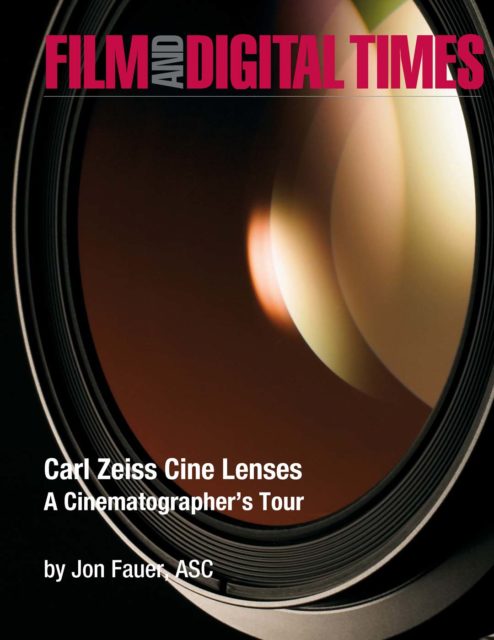Revised and completed updated, our 144 page guide to ZEISS Cine Lenses, construction and a tour of Carl Zeiss factories is now ready to Download (17 MB PDF).
Here’s an excerpt:
In the beginning, for me, there were ZEISS Standards and Super Speeds. On skiing, mountaineering and adventure sports films, ZEISS Standards were perfect. They were about the size of a tennis ball. You could protect them with your extra (clean) wool socks and carry an entire set in your backpack. At night, the Super Speeds, first T1.4, then T1.3, were revolutionary for shooting in low light, remembering always the operative word being “low” and not “no” — and that artful lighting was not rendered obsolete by these new lenses.
As film emulsions became faster and finer grained, and digital sensors were manufactured with higher resolution, ZEISS kept developing newer lenses that raised the bar in sharpness, resolution, contrast and performance.
Ultra Prime lenses were introduced in 1998 as the next generation “Standard” lens. They were quickly followed by LDS Ultra Prime lenses. The Lens Data System (LDS), developed with ARRI, consists of encoders inside the lens barrels that provide focus, iris, focal length and other information to the camera via gold-plated contacts in the PL mount. The Lens Data System has two jobs. It lets you monitor lens status (focus, iris, zoom) and depth of field information on your video assist monitor or on a dedicated Lens Data Display. The Lens Data System also provides continuous real-time lens information to the camera. This data is used to automate in-camera effects like speed/iris ramps or shutter/iris ramps without having to manually enter the data. Ultra Prime lenses mostly have a maximum aperture of T1.9 (8R is T2.8; 10mm is T2.1; 12mm is T2.1). The latest Ultra Prime, the 8R Rectilinear, was introduced at NAB in 2005.
Master Prime lenses were introduced at NAB in 2005. With a wide-open aperture of T1.3 for all, they can be considered the sons of “Super Speeds.” Master Prime lenses were introduced with T-shirts that proclaimed, “Breathless!” and they truly are. When you rack focus, the image does not “breathe;” the image does not appear to zoom or change size as you quickly focus from near to far. To achieve this, Master Prime lenses have added elements that compensate, almost like a reverse zoom lens. They focus on cams, which are less stiff than the threaded Ultra Prime lenses. Master Prime lenses are sharper, have higher contrast and less flare. Internal baffles prevent random spill.
What does this mean for the cinematographer? Ultra Prime lenses are smaller and lighter. You may prefer them if you’re shooting handheld or on Steadicam all day. But if the script says “EXT. CITY – NIGHT” or “Rack focus from ECU of scorpion in foreground to pirate ship on horizon,” or “Car heads straight for camera, headlights blazing against darkened city,” you’ll save time, money and potential reshoots with Master Prime lenses.









